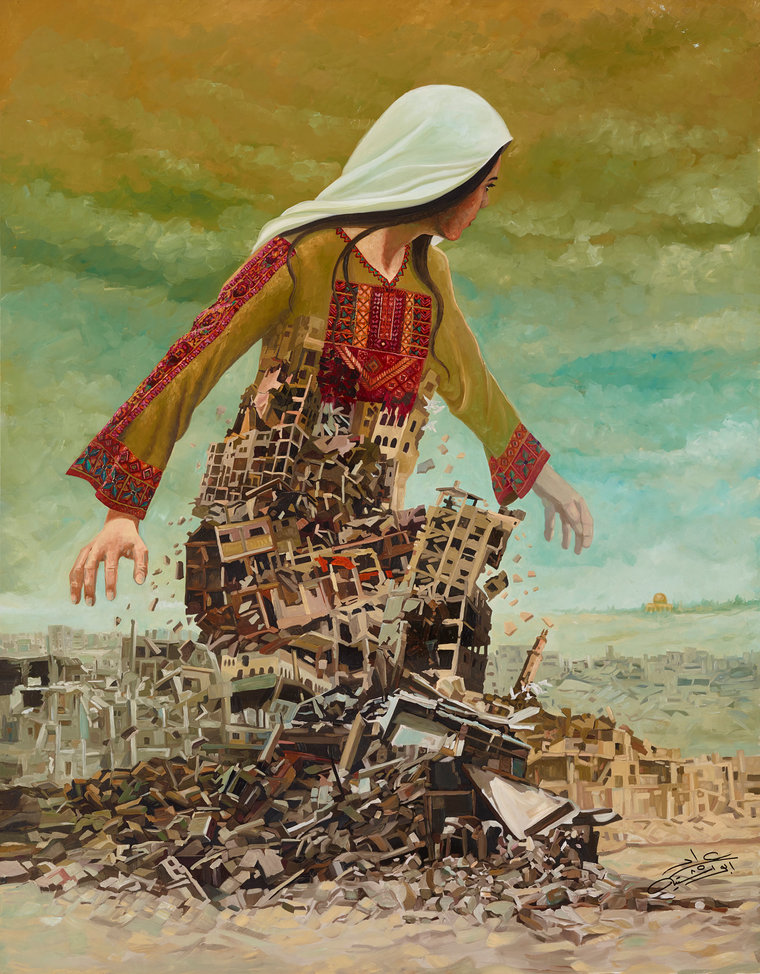A few notes on Arab Art
The term Arab may for some invoke an image of bearded terrorists and for others a rich cultural heritage that dates all the way back to Abraham, allegedly some 4,000 years ago. Arabs are direct descendants from the first born son Ismael (Ishmael for Hebrews) who was cast into the present day Arabian Peninsula with his mother but was given the gift of fertility and subsequently 12 sons.
The Arabic language was spoken before Christ by such personalities as Cleopatra whose “supposed scholarship derives from the Arab world where Roman propaganda did not penetrate! There, she established herself as a philosopher, physician, scientist and scholar” (Cleopatra: A Life by Stacy Schiff). Arabic is also one of six official languages of the United Nations.
Before the language itself was standardised and spread rapidly by the onset of Islam and the Quran, Arabic Poetry “held an important position in pre-Islamic society with the poet or sha’ir filling the role of historian, soothsayer and propagandist. Words in praise of the tribe (qit’ah) and lampoons denigrating other tribes (hija’) seem to have been some of the most popular forms of early poetry. The sha’ir represented an individual tribe’s prestige and importance in the Arabian peninsula, and mock battles in poetry or zajal would stand in lieu of real wars. ‘Ukaz, a market town not far from Mecca, would play host to a regular poetry festival where the craft of the sha’irs would be exhibited” (Wikipedia).
Irrespective of the Arab origins, today Arabs, or in our specific case, the populations of countries that are members of the Arab League where Arabic is the official language number over 350 Million. This number does not reflect the Arab diaspora who perhaps do not know the language or have citizenship in an Arab country but still consider themselves Arabs.
While some today from these countries, especially in the diaspora, would denounce their Arab identity, many embrace the customs, cultures, cuisine and what brings us to this platform, the Art with great pride of this heritage.
All the Artists soon to be featured on this website are those that specifically embrace, accept and are proud to refer to themselves as Arabs.
Art as a global interest is quite recent and while there are many archaeological artefacts from the Arab regions that fill already a multitude of Museums around the world, our concern here with Arab Art includes predominantly Modern (1860s – 1950s) and Contemporary Art (1950s – Present). While Islamic Art does play a significant role in Arab Art as a whole, and you will find on this platform many references to religious art, we take the position here that Arab Art, in the way we define it is a secular practice and quite often can beautifully merge the different forms of Art into objects that are unique, original, full of spirituality and profound narratives.
We accept the individual characters, customs and diversity of all the Arab countries, and while we as a platform will always be firmly apolitical, there are undoubtedly artists who use their craft to tailor a political message which may resonate positively for some and negatively for others.
Arab Identity “is defined independently of religious identity, and pre-dates the spread of Islam and before spread of Judaism and Christianity, with historically attested Arab Muslim tribes and Arab Christian tribes and Arab Jewish tribes. Arabs are a diverse group in terms of religious affiliations and practices. Most Arabs are Muslim, with a minority adhering to other faiths, largely Christianity,but also Druze and Baháʼí ” (Wikipedia).
As the Arab Art project get's up and running, we suggest visiting the following institutions where you can learn about the most important Modern and Contemporary Arab Art.
Contact us
We are a platform dedicated to researching and promoting Modern and Contemporary Art by Arab Artists. We’re just getting setup so if you have anything interesting to contribute concerning Arab Art or just want to say hello and get to know us, please send us a message using the form below.


